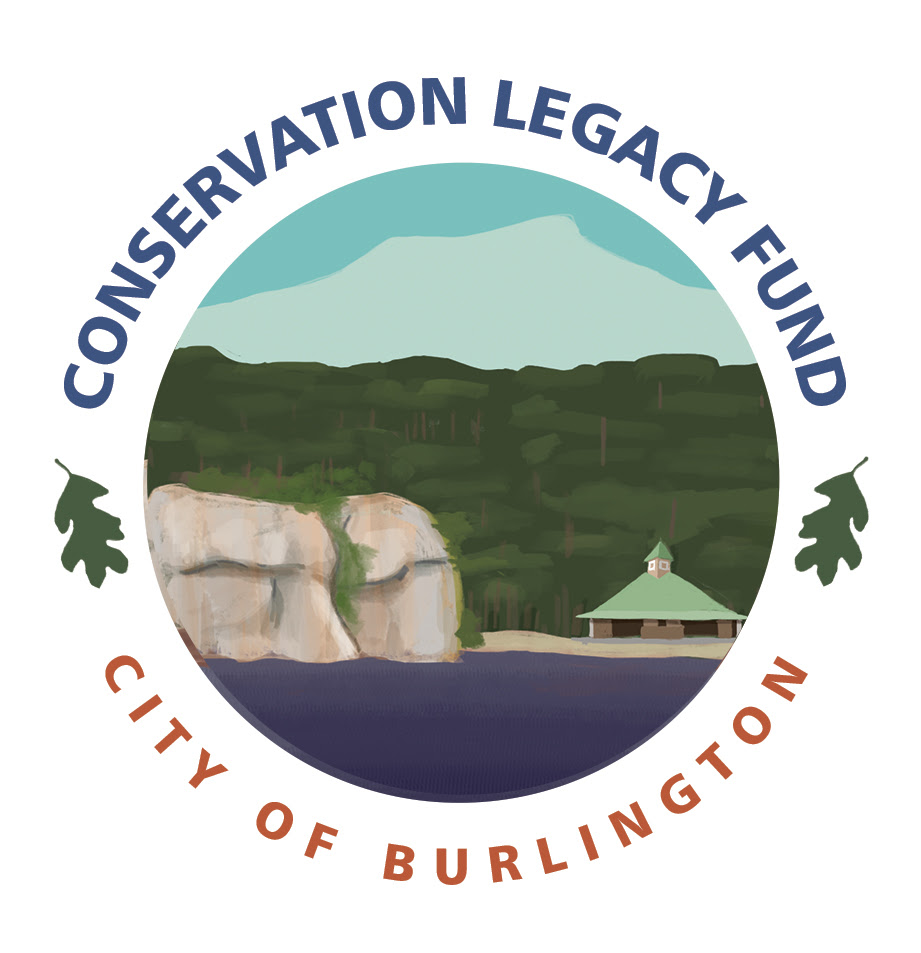 BTV Conservation News Fall 2021 / Issue No. 20 |
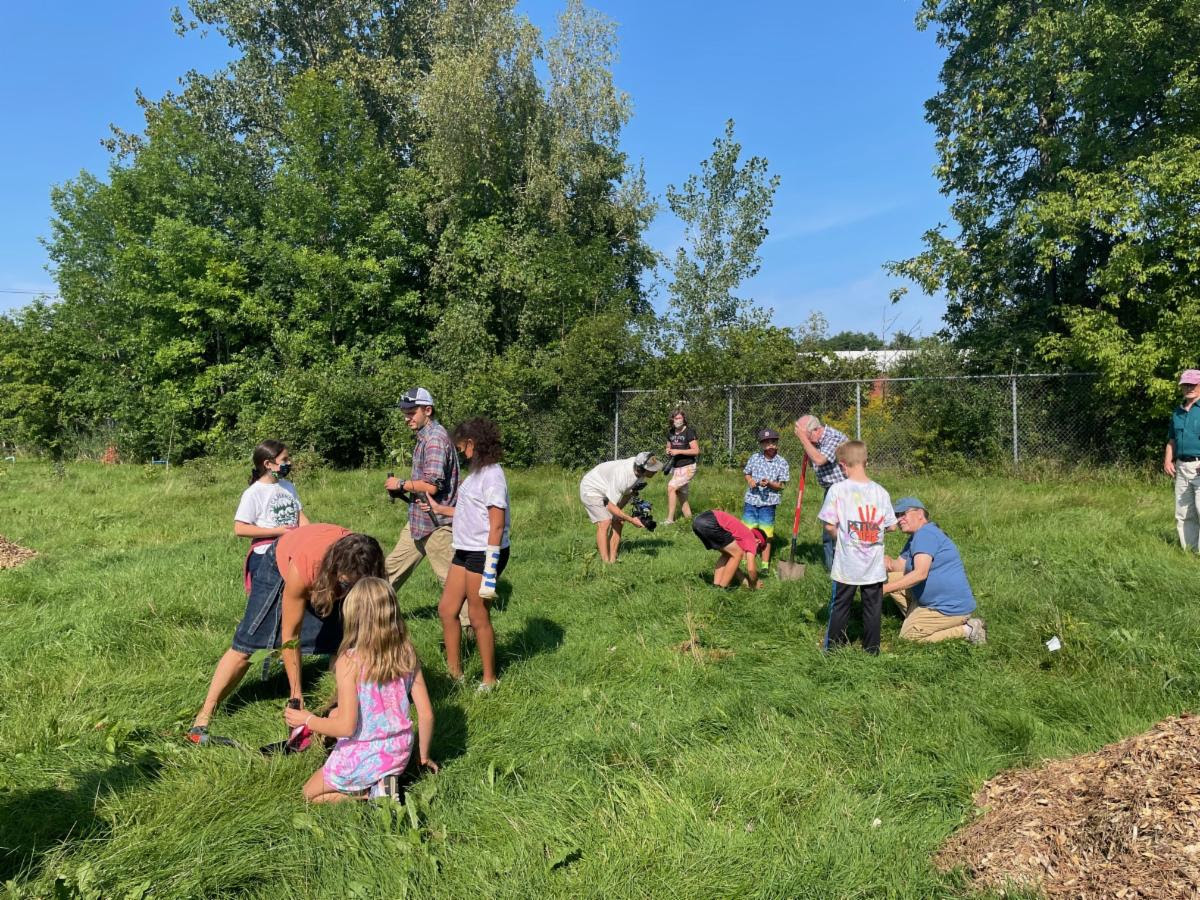 Champlain Elementary School teachers and students along with Burlington Wildways, BPRW and Grow Wild volunteers plant trees in a wildlife corridor with special guest Doug Tallamy, author of Nature’s Best Hope, who is holding the red handled shovel. The fall in Burlington invites all of us to be outside in the cool, colorful woods. If you are lucky when you are out and about, you might see a bobcat. But don’t count on it! They will most likely hear or see you first and melt away on little cat feet. One thing you can count on seeing in our City are some really big trees. Gustave Sexauer, Burlington Wildways Cartographer, has recorded the Champion Trees of each neighborhood on the map below. Go “collect” them all! The first phase of trail rehabilitation in Arms Forest has been completed. Enjoy the beauty of one of the wildest places in Burlington as you stroll along the ecologically designed trail system built by Timber and Stone. The diversity of trees in Arms Forest will guarantee a rainbow of fall colors, including burgundy oak leaves, red and orange maple leaves, and bright yellow cottonwood leaves. A fun game for kids is to try to find a leaf of every color. We still like doing that! Here is a link to a virtual hike in Arms Forest, we visit with the trail builders from Timber and Stone and learn about some of the hidden gems in the forest. Also visit the new poetry walk at 311 North Avenue. It represents the work of many talented artists and poets who answered the City’s call to submit work. And Grow Wild is continuing to bring native plants back to the City. The creation of new habitat for our insects and birds in one of the most effective way to take climate action through nature based solutions. Watch for ways to get involved in the Grow Wild effort in our spring newsletter when the cycle of seasons turns us again toward growing native plants. Alicia Daniel Field Naturalist, BPRW Dan Cahill, Land Steward, BPRW |
| Bobcats in Burlington, Finding Champion Trees, Trail Work in Arms Forest |
Bobcats in Burlington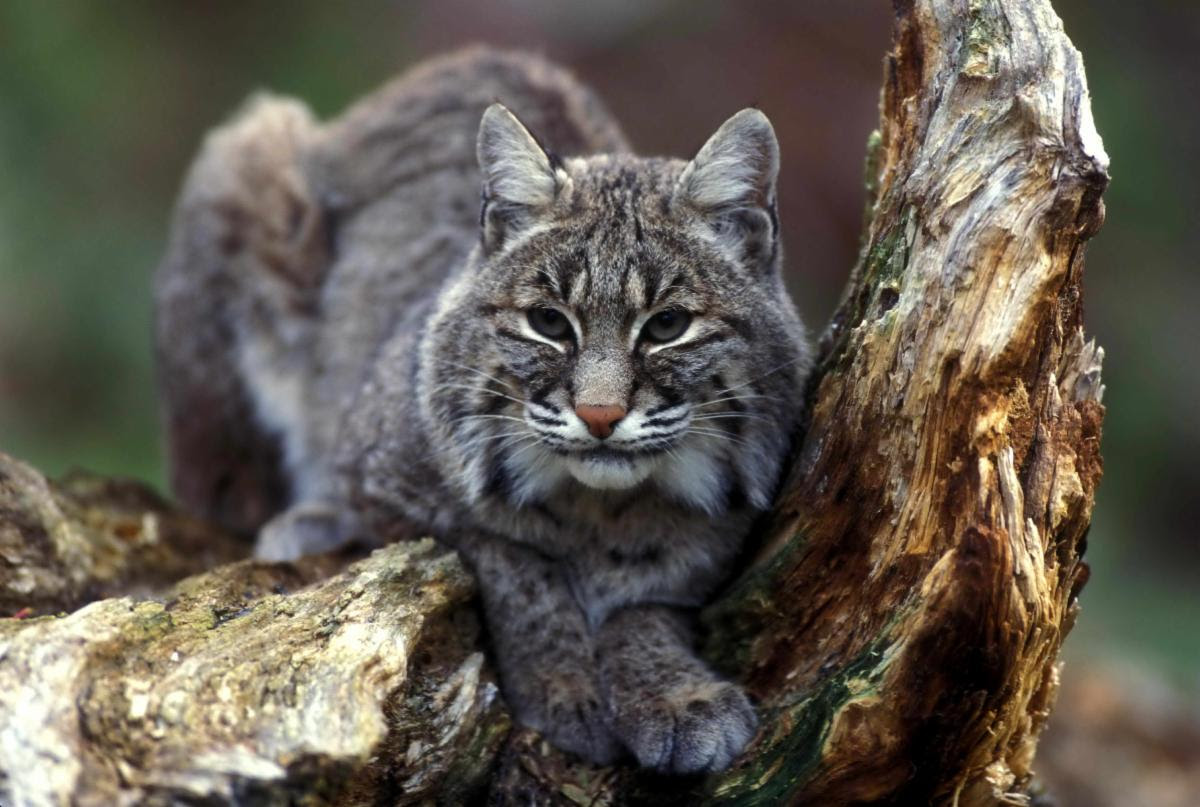 Along the muddy shore of the Winooski River where the silver maples stretch their long limbs out over the water, I always look for animal tracks hoping to find bobcat. These wildcats ghost along the river, mostly at night, hoping to avoid encounters with humans and dogs. Their motion is fluid, like the water they follow. Their desire to remain hidden means they often flow through the lowest points of a landscape in hedgerows and gullies. Bobcats are an elusive, quiet presence in our City. Click here to continue reading the article by Alicia Daniel Click here to see a bobcat family feeding on a deer in Centennial Wood 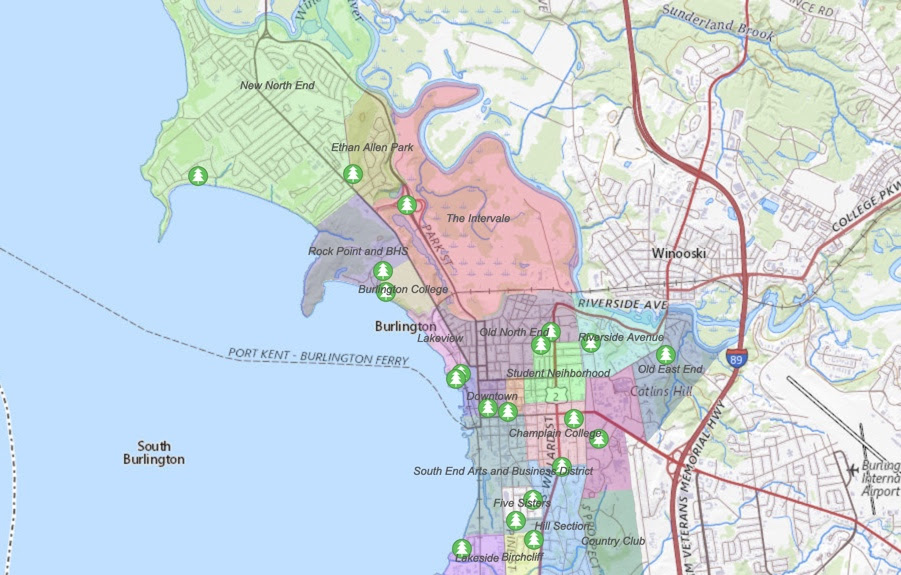 Champion Trees in Your Neighborhood Have you ever wondered where to find the biggest tree in your neighborhood? Whether your Champion Tree is a silver maple, red oak, cottonwood or white cedar, now you will know where to look. Use this map to go on a scavenger hunt for big trees all over town. Click here to find the map by Gustave Sexauer |
| Phase One of Trail Work in Arms Forest Now Complete |
 During the summer of 2021, Burlington Parks Recreation and Waterfront worked with Timber and Stone to improve the trails in Arms Forest. Phase One of the trail design is now complete. The new trails protect Arms Forest’s uniquely diverse ecology of wild plants and animals and address the need for greater accessibility and sustainability. Click here for a video tour of the new trails in Arms Forest Visit the new Poetry Walk at 311  BPRW invites you to take a quiet moment to visit the new poetry walk at 311. The Poetry Walk is a window into a new way to engage with public space in Burlington. The Poetry Walk aspires to transcend a long history of harmful actions. Going as far back to the original colonization of Abenaki land, the property has also housed a misused orphanage, where many children experienced abuse, and the unfortunate closure of Burlington College, a beloved local arts college. Now in public hands, the Park is embracing a management plan that centers on healing and reciprocation. It will be, in perpetuity, a space for learning, sharing, and reflection. Learn more about the Poetry Walk |
| Conservation Partners: Grow Wild and Burlington Wildways |
Grow Wild: Garden Habitat for Native Pollinators Spring 2021 was an exciting time in Burlington. Several public green spaces around the City were enhanced for both humans and wildlife, including the Intervale, Manhattan Drive, and Champlain Elementary School. Little did they know, the native pollinators of Burlington would be provided a seasonal buffet in a garden setting, courtesy of Grow Wild. With the help of Lakeview Cemetery groundskeepers and Burlington Parks, Recreation and Waterfront staff, Grow Wild’s Tori Hellwig designed, planted, and maintained a pollinator habitat garden full of colorful and constant floral resources in some insect-friendly sandy soils common to the shores of Lake Champlain. The garden mimics a sand prairie and can be found front and center at the entrance of Lakeview Cemetery. Learn more about Grow Wild  Doug Tallamy Visits Champlain Elementary School On August 27, Doug Tallamy, who literally wrote the book (Nature’s Best Hope) on bringing native plants to lawns and gardens visited Champlain Elementary School to celebrate the Grow Wild work on this site. Tallamy spoke with Juniper Creative Arts about their pollinator themed mural and planted shagbark hickory trees with students. Champlain School teachers and students, Burlington Wildways, Burlington Parks, Recreation and Waterfront, and Grow Wild along with students from UVM, Burlington High School and Burlington City and Lake Semester recently planted a new wildlife corridor and started work on a native plant nursery. Champlain students will be able collect and plant seeds for future projects, learn about nature in their own school yard, and to watch their trees grow for years to come. Watch videos related to Doug’s work 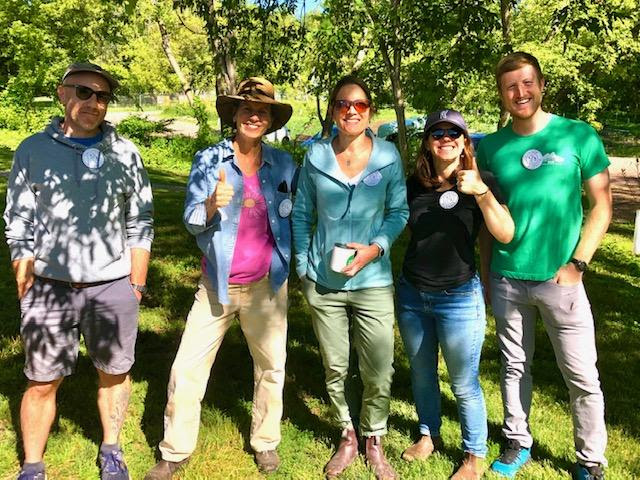 Burlington Wildways Trail Stewards The Burlington Wildways Volunteer Trail Stewardship Program successfully launched in June ’21 and is continuing into 2022 and beyond! The program, created in partnership with The Intervale Center, BPRW, WVPD and the Episcopal Diocese of Vermont , offers community members the ability to collectively take care of the trails that make up the Wildways network. The program comprises of a fun, 30 minute on-line training module, a one hour in-person orientation on site and utilizes a mobile app for stewards to communicate to land managers in real time (think see, click, fix for trails). Certified volunteer trail stewards hike the trails doing such tasks as picking up light litter and reporting on issues that can be addressed by land managers such as large trees down across the trail. The program is a model of effective shared stewardship which involves fostering a relationship of interconnectedness between numerous organizations, the community and nature. Watch for more updates in the spring. Learn more about the Trail Steward Program |
| In the Garden |
 Sydney Stegman and Emma Merritt’s garden at Starr Farm, featuring many medicinal herbs. Community Gardening in Burlington is turning 50! Next season marks the 50th season that Burlington has had community gardens. It’s been an exciting journey, with many adventures to come. The Burlington Area Community Garden Program is putting together a committee to plan and organize how we will be celebrating 50 years of gardening. This committee will meet monthly starting in November. If you would like to join the committee please reach out to Meghan O’Daniel. |
| Fall Happenings |
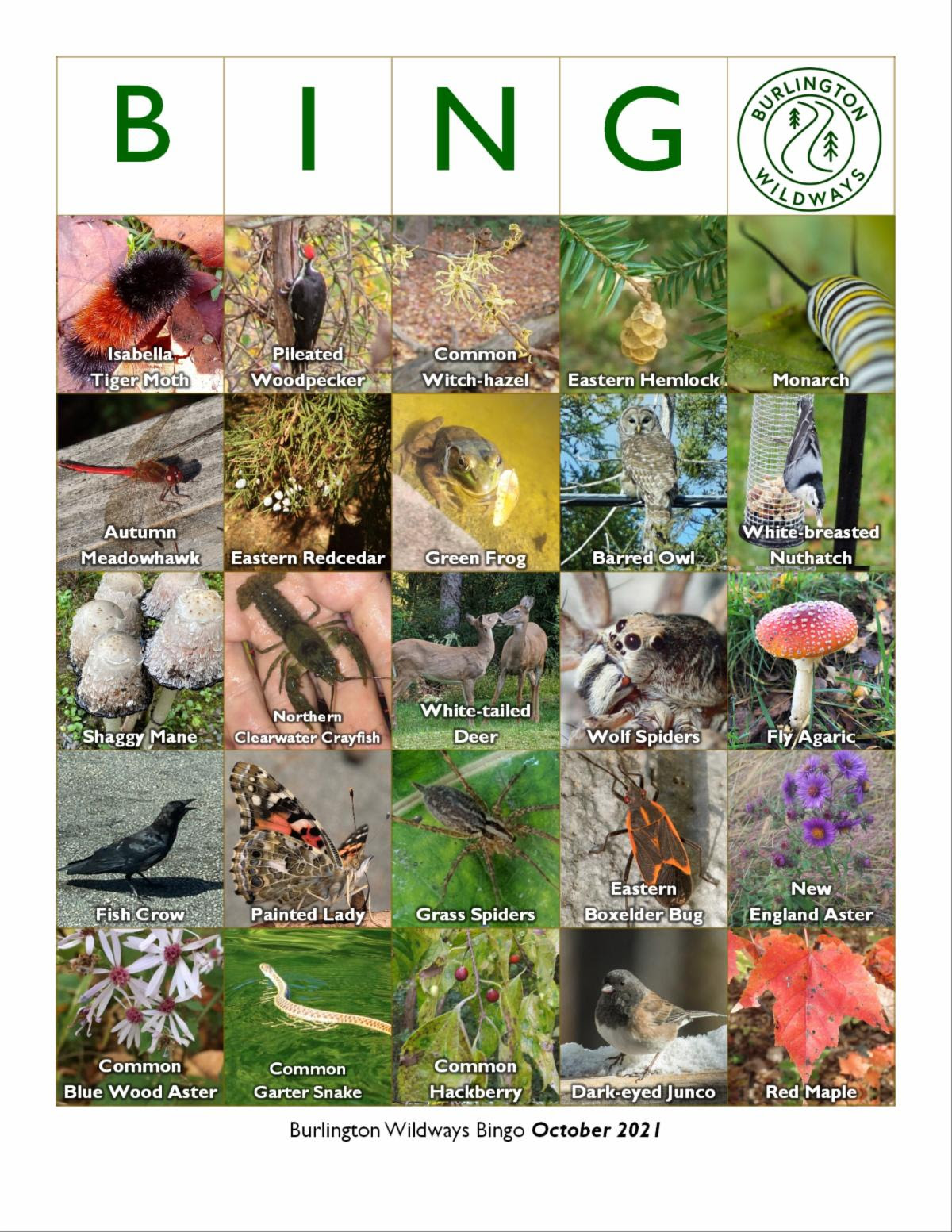 Burlington Wildways October Bingo Card Burlington Wildways outdoor bingo board serves as a monthly scavenger hunt for experts and amateurs alike! To play, use the board below as your guide to species found in Burlington and Winooski right now. Take a photo or record a sound of these species and post your observations to iNatualist.org. If you find the most species in a month, you just may be rewarded… Track your progress on the iNaturalist project page. If you aren’t on iNaturalist, just check off the species you find and see if you can get five in a row before the species reset next month!  Wildways BINGO 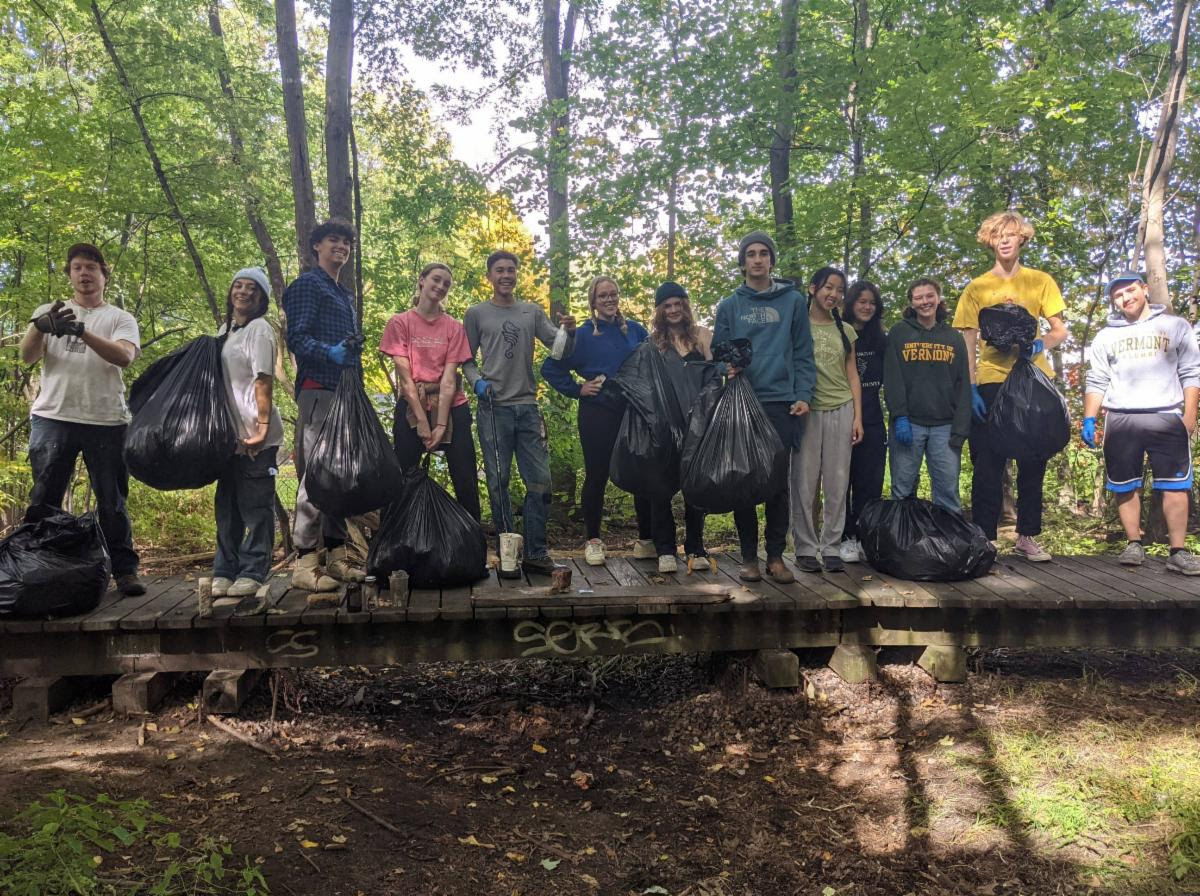 BHS Environmental Club Day of Service at Mt Calvary Wetland On Indigenous People’s Day, the BHS Environmental Club organized a day of service in partnership with BPRW staff at the Mt. Calvary Wetland. Students removed over 15 bags of garbage and had a really fun time! photo: Lina Swislocki Learn more about the Mt. Calvary Red Maple Wetland  Nature Programs In Burlington Vermont Master Naturalist Gene O. Desideraggio is offering a series of nature programs through Petra Cliffs this fall. The mission of Petra Cliffs’ Nature Education Programming is to encourage a greater understanding and appreciation for our local recreation areas. Past programs have included tree identification, landscape natural history, nature by kayak and geological analysis of climbing areas,. These programs occur during the first and last weekend of the month and are targeted towards anyone who would like to learn more about the natural world. GeneO Studied Forestry and Geology at UVM’s Rubenstein School of the Environment and Natural Resources and graduated in 2019, the same year that he completed the Vermont Master Naturalist Program. In 2021 he also got a Leave No Trace Trainer certification in order to add a stewardship facet to the programming. Petra Cliffs hopes to bring knowledge of these fields of study to each hike to educate others about nature and encourage stewardship of our outdoor spaces. Join Petra Cliffs and Vermont Master Naturalists for other nature programs soon and follow @PetraNaturalist on Instagram to keep up to date with GeneO’s programs. Click here for Petra Cliffs nature programs 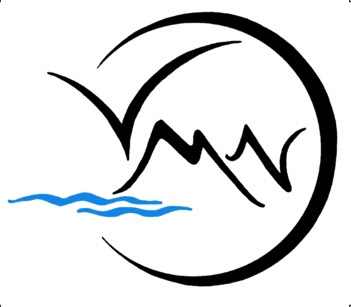 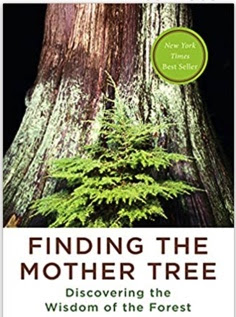 What Trees Have to Teach Us About Being Human Suzanne Simard is the forest ecologist who has proven, beyond doubt, that trees communicate with each other — that a forest is a single organism wired for wisdom and care. Simard found that the processes that make for a high-functioning forest mirror the maps of the human brain that we’re also just now drawing. All of this turns out to be catching up with intelligence long held in aboriginal science. She calls the mature hub trees in a forest “Mother Trees” — parenting, eldering, in a mode of mutuality and reciprocity, modeling what we also know to be true of genuinely flourishing human ecosystems. Click here to hear Suzanne Simard’s interview with Krista Tippett |

